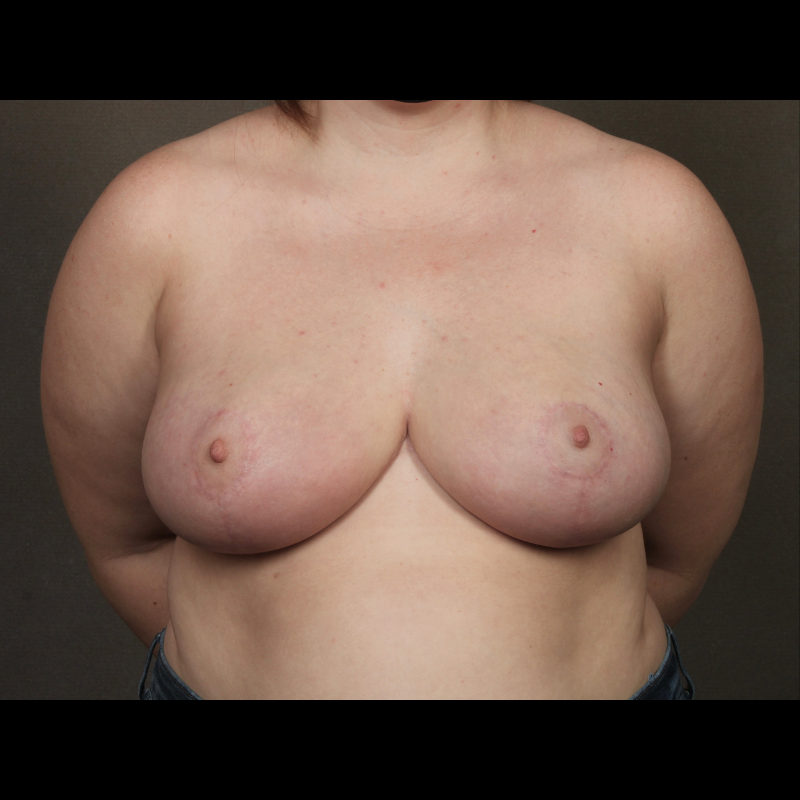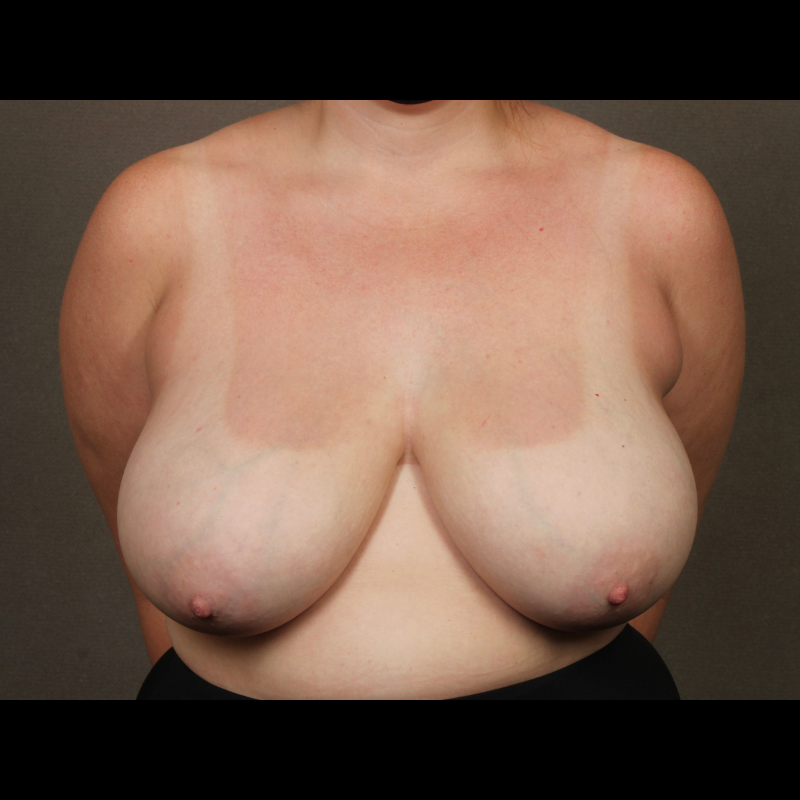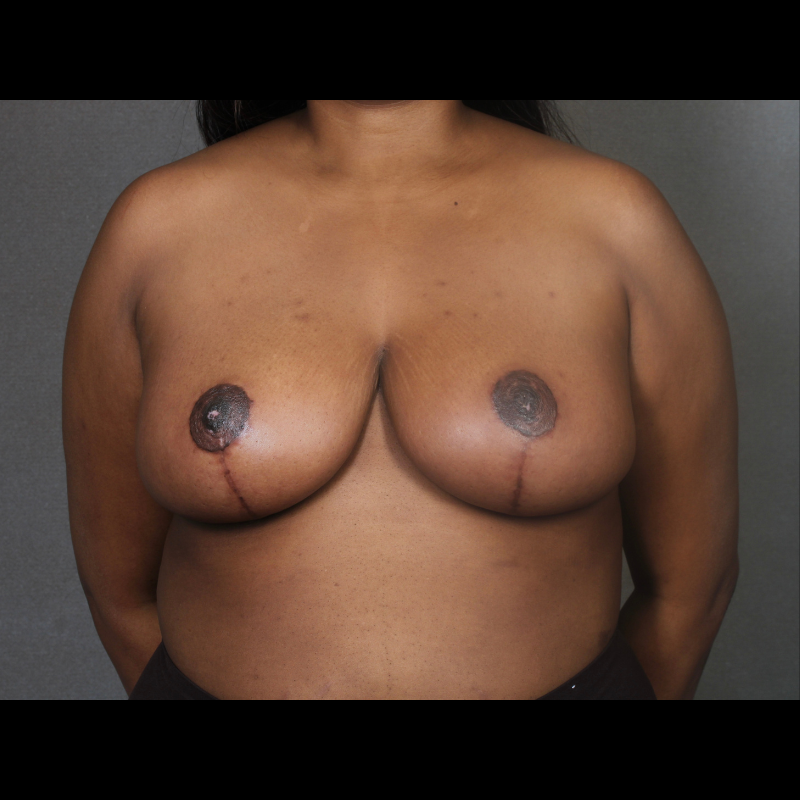Summary
A breast reduction’s primary goal is to decrease the size of your breasts, for either medical or cosmetic reasons. Breast reductions are ideal for women who have symptoms related to their large breasts, such as neck or back pain or recurrent rashes underneath the breasts. A reduction can also be considered for women who have difficulty exercising or are unhappy with the disproportionate appearance of their breasts in relation to the rest of their bodies.
Types of procedures
- Wise pattern breast reduction: This approach uses an “anchor” pattern incision. It is more commonly used for larger reductions.
- Circumvertical breast reduction: This technique involves a “lollipop” pattern incision is used.
Procedure details
- Patient is marked preoperatively in the standing position
- The size of the areola is reduced by removing excess skin around the periphery
- Skin incisions are made and the excess skin and tissue are excised
- The nipple and is preserved on an island of breast tissue and repositioned higher on the breast
- For extremely large and pendulous breast, the nipple may be removed and repositioned as a skin graft
- Breast tissue and skin are closed with dissolvable sutures.
Risks & Benefits
Risks related to breast reductions include loss or decreased sensation to the nipple, asymmetries, difficulty breastfeeding, and potential loss of skin or tissue.
Breast reduction can provide immediate relief to patients experiencing pain, discomfort and insecurity due to their large breast size. This procedure offers women an opportunity to feel better about their bodies and increase their ability to perform physical activities.
Frequently Asked Questions
What should I expect after surgery?
Drains may be placed during surgery. If they are, they will be removed at your first postoperative appointment. Bruising and swelling are normal and will resolve over the first few weeks. Patients can resume light exercise in 2 weeks.
Will insurance cover my breast reduction?
This depends on your breast size and symptoms. We will collect the necessary measurements and documentation during your consultation. If you qualify, our staff will obtain authorization from your insurance company for you.





